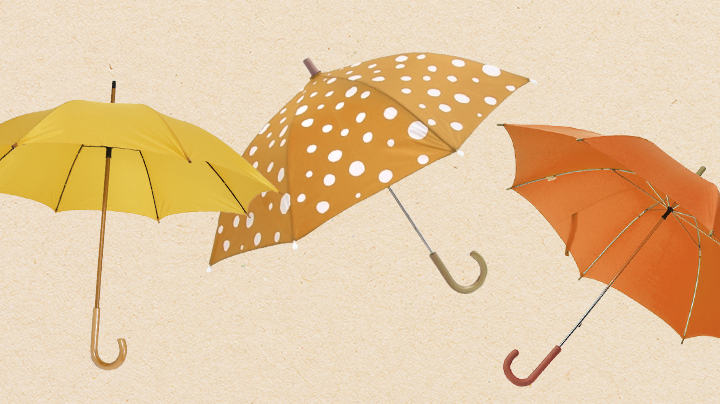The sun’s rays, while a vital source of life and energy, can also pose a significant threat to our health, particularly in the form of skin damage and increased risk of skin cancer. As awareness of these dangers grows, many individuals are seeking innovative solutions for sun protection. One common accessory that people often overlook is the umbrella. But can umbrellas truly shield us from the sun’s fierce rays? In this blog post, we will delve into the efficacy of umbrellas in sun protection and explore various types, their features, and best practices for maximized safety.
First and foremost, it’s vital to understand how umbrellas function as barriers to sunlight. When one uses an umbrella outdoors, it serves as a physical partition between the skin and solar radiation. The primary type of rays that concern us are ultraviolet (UV) rays, which are divided into two categories: UVA and UVB. While both are harmful, UVB rays are primarily responsible for sunburn, and UVA rays contribute to skin aging and may increase cancer risk.
The effectiveness of an umbrella lies in its material and structure. Many umbrellas are designed with a fabric that has a high Ultraviolet Protection Factor (UPF). UPF is a rating system similar to SPF used for sunscreen but applies to fabric. A higher UPF indicates greater UV protection. Generally, a UPF of 30 to 50 is considered effective for sun protection, whereas a UPF below 15 may offer minimal coverage.
When selecting an umbrella for sun protection, one can choose from several types:
- Beach Umbrellas: Typically large and with deep canopies, beach umbrellas provide substantial shade. Their design often incorporates materials with high UPF ratings, ensuring you remain shielded while enjoying coastal breezes.
- Patio Umbrellas: These are excellent for outdoor dining or lounging. They come in various sizes and styles, often featuring UV-resistant fabrics that offer comfortable shade in gardens, backyards, or patios.
- Travel Umbrellas: Lightweight and portable, travel umbrellas are ideal for on-the-go sun protection. Although smaller, many modern designs still utilize UPF fabrics, making them surprisingly effective.
- Golf Umbrellas: Larger and sturdier, golf umbrellas provide expansive coverage, typically used in activities where one might be outdoors for prolonged periods, thus enhancing protection against UV rays.
In addition to material and type, certain umbrella features further enhance their efficacy. Some umbrellas come equipped with vented canopies to reduce wind resistance, making them more durable in breezy environments. Additionally, several designs incorporate reflective materials that deflect UV rays, maximizing shade and minimizing exposure. Moreover, UV-blocking coatings can be applied to the fabric for additional protection that doesn’t compromise the umbrella’s aesthetics.
However, mere possession of an umbrella doesn’t guarantee immunity from harmful rays. Understanding the importance of proper positioning stands crucial in optimizing its protective capabilities. Ensure that the umbrella is angled correctly; direct sunlight hitting the sides can negate its effectiveness. Incredibly, reflected rays can also cause sunburn. This phenomenon occurs when UV rays bounce off surfaces like sand, water, or concrete, potentially reaching areas not directly covered by the umbrella.
It’s crucial to note that umbrellas primarily provide protection from direct sunlight. While they can offer significant shade, they do not block UV rays reflecting off surrounding surfaces. Therefore, supplemental sun protection measures remain advisable. Combining your use of an umbrella with broad-spectrum sunscreen, sunglasses, and protective clothing offers the best approach to safeguard against sun damage.
Furthermore, consider the duration and timing of sun exposure. The sun’s rays are most intense between 10 a.m. and 4 p.m. During these hours, relying solely on an umbrella might not suffice. It’s prudent to retreat to shaded areas or seek indoor shelter when possible. Awareness of the UV index can also guide outdoor activities, helping to make informed decisions about sun protection needs.
For those who frequently spend time outdoors, incorporating an umbrella into their sun-shielding arsenal can significantly enhance protection while allowing them to enjoy their time outside. As with any protective measure, be proactive and attentive. Regularly check your skin for any changes, and consult a dermatologist if abnormalities occur, regardless of protective measures employed.
In summary, umbrellas can undoubtedly offer a layer of protection against the sun, provided they are chosen wisely and used correctly. Their role in our sun safety routine should not be underestimated, especially when augmented with other protective strategies. Whether you’re at the beach, enjoying a picnic in the park, or simply relaxing in your backyard, taking advantage of an umbrella, particularly one specifically designed for UV protection, can significantly enhance your safety from the sun’s potentially harmful effects. After all, a little shade can go a long way in preserving our health and ensuring our outdoor experiences are pleasurable and safe.
